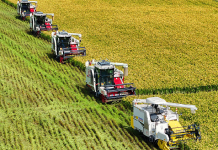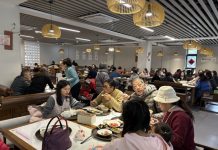JINAN: As the blistering sun blankets east China’s Shandong Province, throngs of Liaocheng residents seek refuge in an urban park’s verdant bamboo grove, eager to find a cool, inviting patch of shade to enjoy some respite from the sweltering summer heat. Just 10 years ago, the 20-hectare bamboo grove, part of Dongchang Lake national wetland park in the city’s Liaocheng, was once a plot of barren saline and alkaline land.
“The salty soil, which was an infinite blanket of whiteness over the winter, is today a year-round green land,” said Zhong Daojun, director of the city’s grass tree and bamboo development research center.
Constrained by geography and climate, bamboo cultivation in northern China was uncommon in the past.
Thanks to a project starting in the 1950s to transfer the plantation and breeding of cold-resistant bamboo species from the south of China to its north, bamboo has taken root and is a popular plant used in urban and rural greening, beautification of public facilities, and ecological restoration in northern China. In addition, numerous bamboo products have now replaced plastics, contributing to the country’s green development.
Liaocheng is one of the earliest areas to experiment with the bamboo project.
Now, the city has five bamboo germplasm resource farms, its bamboo plantation area exceeds 200 hectares and it boasts a bamboo grove that hugs the Yellow River. –Agencies






